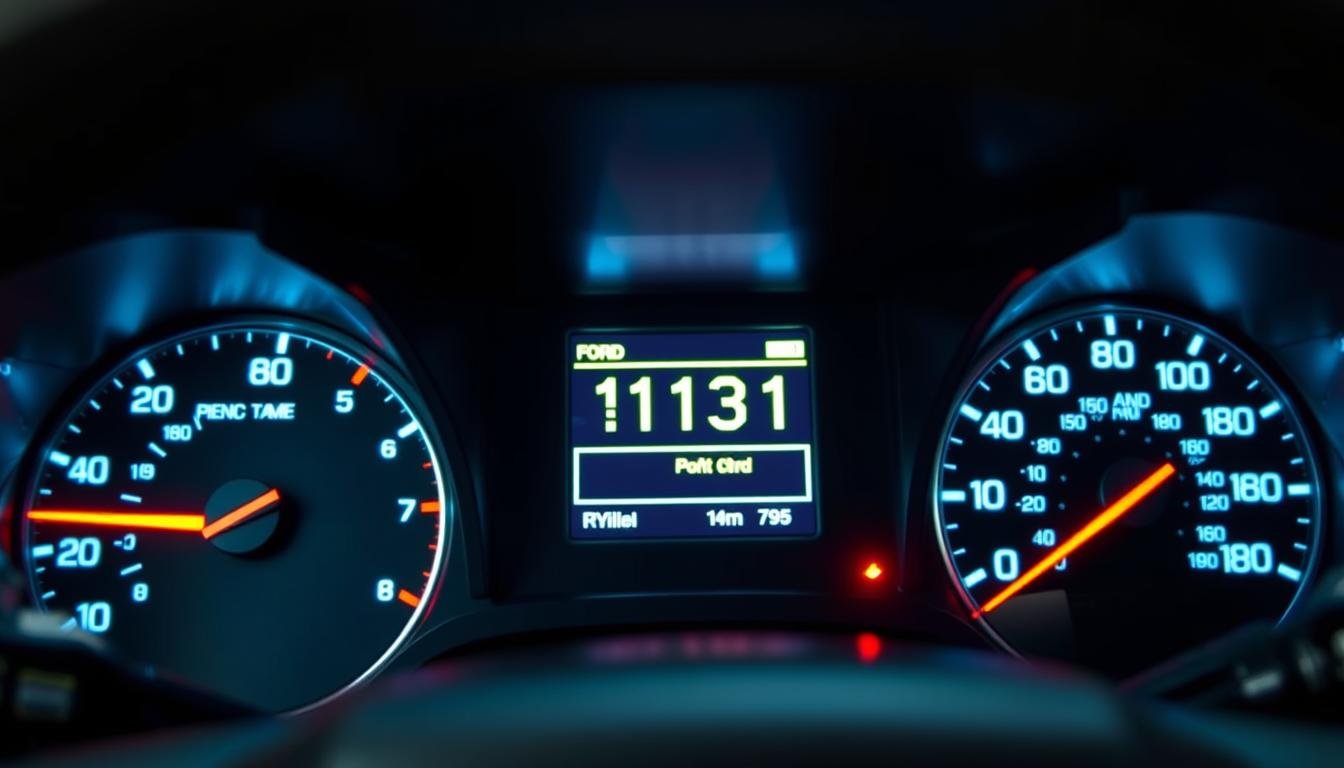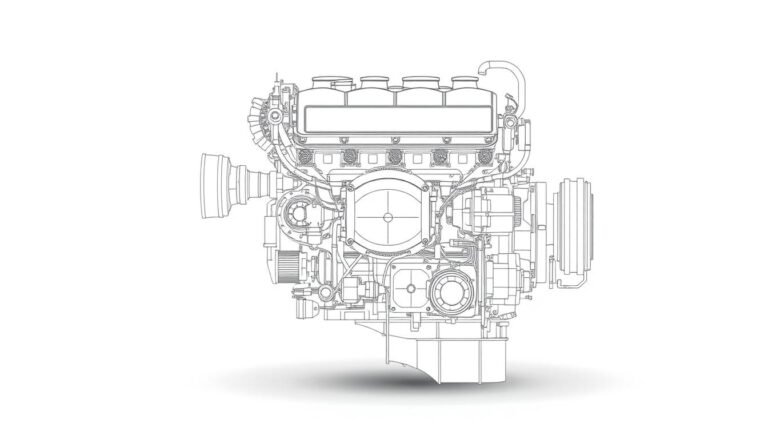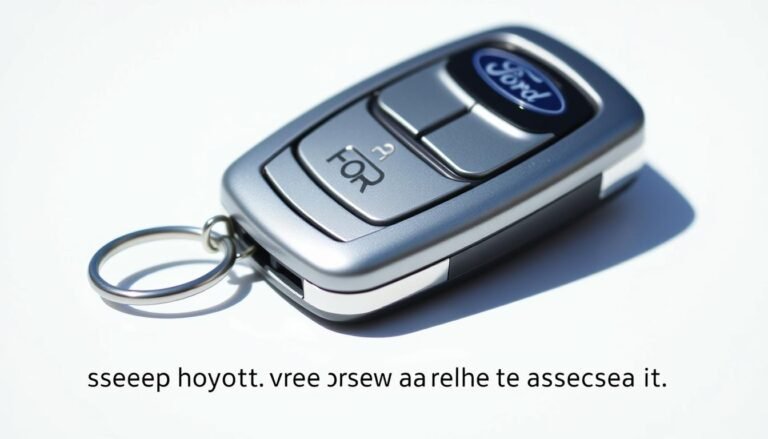P1131 Code Ford F150 – Troubleshoot & Fix Guide
The P1131 code on a Ford F150 points to problems with the oxygen sensor in front of the engine, specifically for bank one.
It usually means the engine is getting too much air or not enough fuel. If you don’t take care of it, your truck could run badly, use more gas, or even get engine damage.
We’re here to show you how to fix the P1131 code on your Ford F150 by explaining what causes it and what symptoms to look out for.
First, you’ll need to use a tool called an OBD-II scanner to find the code. Then, check out parts of your truck that might be causing the problem.
We’ll show you why these steps are important and what tools you’ll need. With the right know-how, you can keep your Ford F150 running smoothly.
What is The P1131 Code in Ford F150?
The Ford F150’s P1131 code acts as a warning about oxygen sensor issues. Knowing what the P1131 code means is key for keeping your truck running well.
It tells us that the O2 sensor in front of the engine, on bank one, can’t switch between rich and lean fuel mixes correctly.
Definition of P1131 Code
The engine control module (ECM) sends out the P1131 code if there’s a snag in the oxygen sensor’s readings. This means the sensor can’t report the right air to fuel mix.
It often leads to too much air and not enough fuel, which affects how well your engine works.
Implications of A Lean Fuel Mixture
A lean fuel mix can really impact your Ford F150’s performance and life. Running lean, the engine faces several problems.
These problems include:
- Engine knocking noises from improper combustion
- Less fuel efficiency, which means more costs
- More exhaust emissions, which is bad for the environment
- Possible damage to engine parts from too much heat and pressure
Addressing the P1131 code early helps avoid expensive fixes and keeps your truck dependable.
Symptoms of P1131 Code Ford F150
It’s key to spot P1131 code symptoms in your Ford F150 early. A big hint is the check engine light coming on. This light shining means there’s a problem that needs checking out.
Check Engine Light Activation
When the P1131 code pops up, the first clue is often the check engine light. This light is the car’s way of saying there’s a glitch. It’s wise to look into it to avoid bigger issues later.
Performance Issues
If the check engine light is on, you might also see your car’s performance dip. It might speed up slowly or idle roughly. This happens when the fuel mix is off, making the engine run poorly.
Poor Fuel Economy
Poor fuel economy is another big clue. If your car starts guzzling more gas, it could be the P1131 code’s fault.
This means the engine isn’t burning fuel right, which can hit your wallet hard over time.
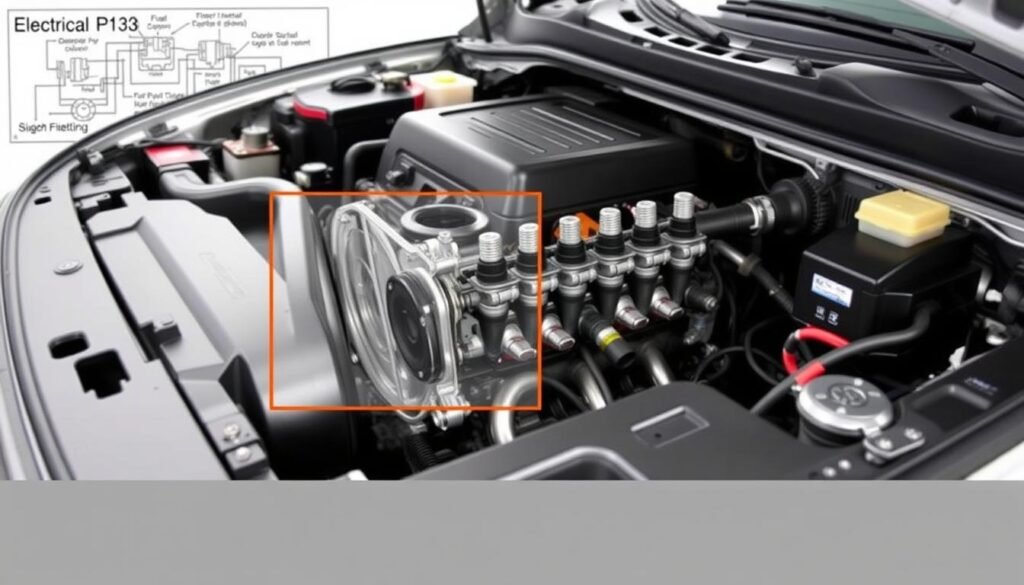
Don’t ignore these signs; they could lead to worse problems for your car. Being quick to act helps keep your engine in top shape.
Common Causes of P1131 Code
Learning about the common causes of the P1131 code helps you fix your Ford F150. This code comes from specific areas that affect your vehicle’s engine function.
Defective Oxygen Sensor
An oxygen sensor is key in regulating your engine’s air-fuel mix. If it breaks, it can’t measure the air-fuel ratio correctly.
This leads to a lean condition and sets off the P1131 code. Check the sensor to make sure it’s working right, for the sake of performance and fuel use.
Fuel System Malfunctions
Issues in the fuel system are big reasons for the P1131 code. These can be blocked fuel filters, broken fuel injectors, or low fuel pressure.
Each problem blocks fuel flow, messing up the air-fuel balance. Keeping the fuel system in check helps avoid these issues and keeps the engine running smoothly.
Air Leaks in The Engine
Unexpected air entering the Ford F150’s engine affects its power. It ruins the proper air-fuel mix by adding too much air, causing a lean condition.
Usual leak sources are damaged vacuum hoses, intake manifold gaskets, or throttle body gaskets.
Finding and fixing these leaks is essential for engine efficiency and solving the P1131 code.

Diagnosing The P1131 Code
Figuring out the P1131 code means following a step-by-step approach. It’s important to use the correct tools and methods for precise outcomes.
First, you hook up an OBD-II scanner, then check out the parts visually and test the sensors. Every step is vital to find out the exact issue.
Utilizing an OBD-II Scanner
To start diagnosing the P1131 code, connect an OBD-II scanner to the diagnostic port of your vehicle. This gadget aids in getting the P1131 code and other errors from the system.
It’s important to look at any additional codes closely. They can give clues to what’s really wrong.
Visual Inspection of Components
A careful look at your Ford F150 is crucial. Check the oxygen sensor’s wiring and plugs for damage or rust.
Make sure there are no loose or damaged wires. Such a detailed look helps spot problems that could cause the P1131 code.
Test Procedures For Sensors
After figuring out which sensors to focus on, run tests on them with your OBD-II scanner. Make sure they are working as they should.
Checking their signal output and how fast they respond is key. Writing down the test results helps pinpoint the issues related to the P1131 code.
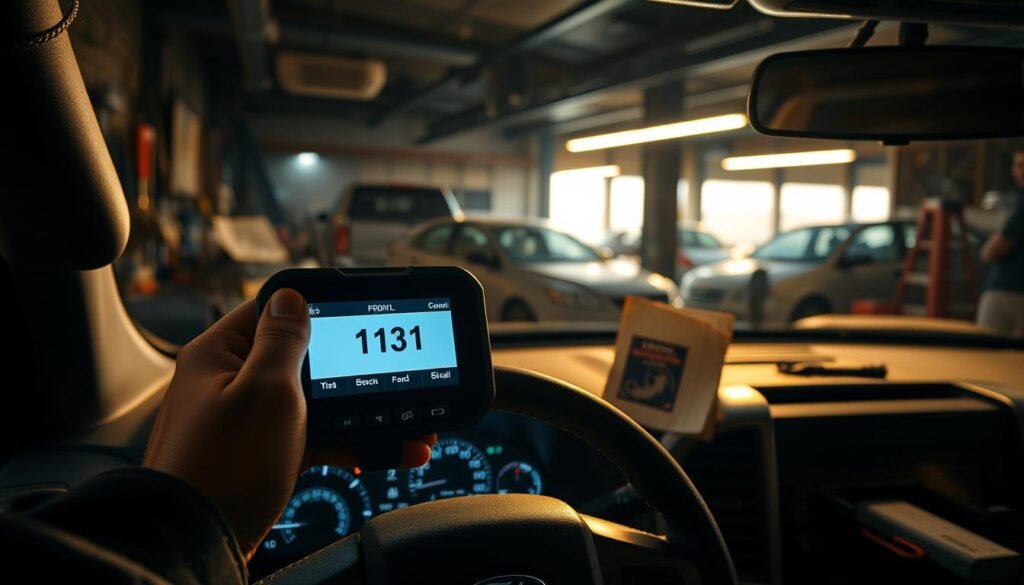
P1131 Code Ford F150 – Troubleshoot & Fix Guide
Fixing the P1131 code in your Ford F150 starts with a step-by-step plan to find the main problem. First, use an OBD-II scanner to check the code and then clear it.
Watch to see if it comes back. This helps figure out if the issue keeps happening or if it was just a one-time thing.
Steps For Troubleshooting
- Use your OBD-II scanner to confirm the presence of the P1131 code.
- Clear the code and monitor if it reactivates after driving for a while.
- Perform a visual inspection of relevant engine components for obvious issues.
- Utilize a multimeter to test the voltage output of the oxygen sensor.
- Assess fuel system performance and check for air leaks in the engine.
Tools Needed For Diagnosis
Gathering the right tools is key to effectively figuring out the P1131 Ford F150 issue. Make sure to have these tools:
- OBD-II scanner for initial code detection and clearing.
- Multimeter for electrical testing of sensors.
- Basic hand tools for accessing engine components during inspection.
Importance of Clear Codes
Clearing codes before further diagnosis is crucial. Always clear previous codes first. If the P1131 code comes back, it shows there are still problems that might involve the oxygen sensor or other parts.
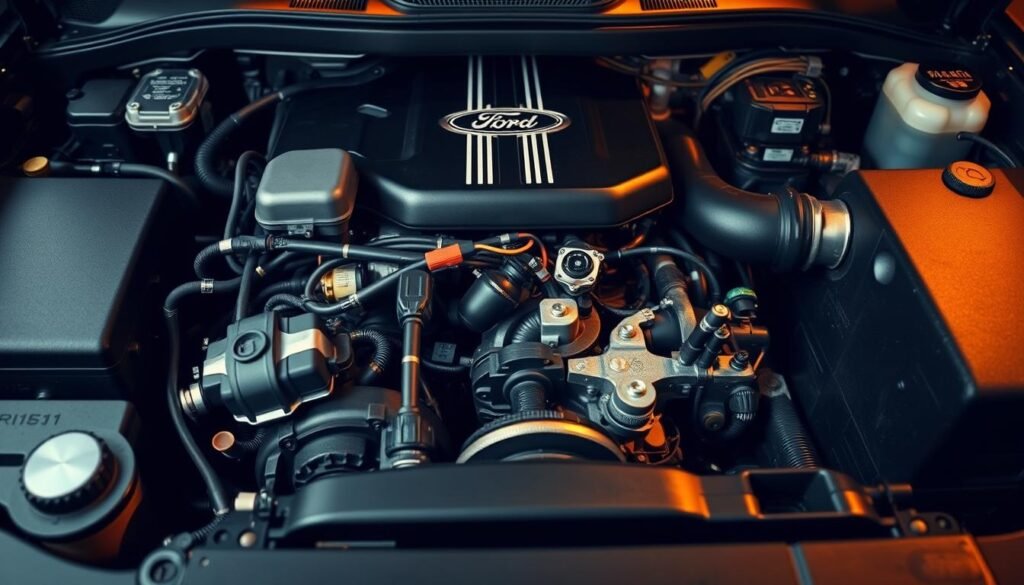
Fixing The P1131 Code
To fix the P1131 code, follow a step-by-step plan. This includes changing sensors and checking the fuel system.
Also, fix any air leaks. Doing these things will help your Ford F150 run better and fix its problems.
Sensor Replacement
If your Ford F150’s oxygen sensor isn’t working right, start by replacing it. A bad sensor can mess up the air-fuel mix readings. Pick a quality part for a lasting fix and to keep the gas mileage good.
Fuel System Checks
After changing the sensor, check the fuel system. Make sure the fuel pressure is right. Look at the injectors for blockages or leaks.
Keeping the fuel system in good shape stops the P1131 code from coming back.
Repairing Air Leaks
Look carefully for any air leaks that might hurt engine performance. Check hoses, gaskets, and the intake manifold.
Small air leaks can cause too much air to mix with the fuel. This can trigger the P1131 code.
Cost of Diagnosing and Fixing P1131 Code
When you see a P1131 code on your Ford F150, it’s crucial to know the costs. The cost of diagnosing P1131 differs by location and the service provider. This info helps you plan for the expenses you might face.
Labor Costs at Auto Shops
Auto shop labor fees vary between $75 to $150 an hour. This depends on the shop’s location and pricing policy.
Hence, the total cost of diagnosing P1131 varies. Choosing a trusted auto shop ensures you get good service and the right diagnosis.
Parts Replacement Costs
If parts need replacing, you’ll see additional parts replacement costs Ford F150. For example, oxygen sensors cost about $50 to $100.
The price for fixing the fuel system changes with the complexity and the parts needed. Knowing these costs helps keep your vehicle running well.
Tips For Preventing The P1131 Code
Keeping your Ford F150 in good shape is key to stopping the P1131 code. Being proactive about your car’s care avoids expensive fixes and keeps it running well.
Following the right maintenance advice is important for your engine’s health and power. It helps prevent this error code by regularly checking and caring for certain parts.
Regular Vehicle Maintenance
It’s very important to stick to a regular maintenance plan. You should focus on:
- Inspecting the fuel system parts like filters, pumps, and injectors often.
- Changing the oil regularly for the best engine performance.
- Changing old or broken sensors from time to time.
Monitoring Fuel System Health
Watching your fuel system closely can lower your chances of getting the P1131 code. Here’s what to do:
- Look for any fuel line leaks to keep the fuel pressure right.
- Pay attention to how sensors work and replace any that don’t work well.
- Use good quality fuel to keep your fuel system working great.
Additional Related OBD-II Codes
When you’re fixing the P1131 code in your Ford F150, know other OBD-II codes can pop up.
These codes often show problems similar to P1131. By understanding these, you can find and fix the main problem better.
Similar Codes To Watch For
Keep an eye on these related OBD-II codes:
- P0171: Indicates a lean condition in bank 1.
- P0174: Signifies a lean condition in bank 2.
- P1151: Relates to the performance of the oxygen sensor.
These codes provide clues about issues with your engine’s fuel mix and how it runs.
Knowing Interrelated Issues
Learning how different problems are connected is crucial when a P1131 code shows up in your Ford F150. Many parts in the fuel and air systems work together.
If one part has issues, it might trigger other OBD-II codes. Knowing this helps you address many problems at once.
This approach improves your repairs and lowers the chance of issues coming back.
Conclusion
It’s important to fix the P1131 code in your Ford F150 to keep it running well. If you ignore this code, your truck might run less efficiently and might even damage the engine.
Compromise what the code means and its common causes can help you stop problems before they start.
By following the steps to troubleshoot, you can find out what’s wrong with your truck. Making the needed repairs gets rid of the P1131 code.
Regular checks and maintenance make sure your F150 stays in good shape and reliable on the road. Dealing with this issue quickly saves you both time and money.
By keeping an eye on your vehicle and fixing problems early, you can drive without worries. This helps you avoid bigger issues linked to the P1131 code.
FAQs
Q: What does the P1131 code indicate in my Ford F150?
A: The P1131 code means the upstream oxygen sensor in bank one isn’t working right.
This results in a lean fuel mixture.
Q: What are the symptoms of the P1131 code?
A: You might see the check engine light, experience slow acceleration, have rough idling, and notice your fuel economy dropping.
Q: How can I troubleshoot the P1131 code?
A: First, use an OBD-II scanner to find the code. Then, check the oxygen sensor visually.
Use a multimeter on the sensor to check if it works.
Q: What common causes lead to the P1131 code?
A: The code is often due to a bad oxygen sensor, issues in the fuel system, or air leaks.
Q: How do I fix the P1131 code?
A: To fix it, replace the sensor if needed, check the fuel system for issues, and fix any air leaks.
Q: What costs should I expect for diagnosing and fixing the P1131 code?
A: Diagnosing the code can cost to 0 per hour.
An oxygen sensor costs between and 0.
Repair costs for the fuel system will vary.
Q: How can I prevent the P1131 code from appearing again?
A: Regular checks of the fuel system and keeping an eye on sensors can prevent the code from coming back.
Q: Are there other OBD-II codes related to the P1131 I should know about?
A: Yes. Codes like P0171 and P0174 also signal lean conditions.
Code P1151 is about oxygen sensor performance and can offer more insights.

